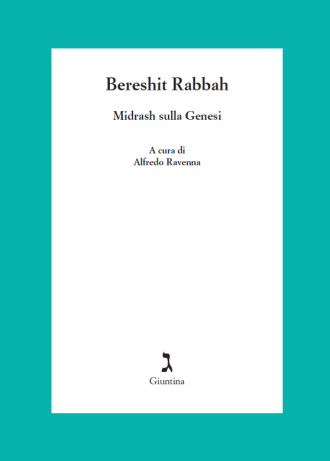BOOKS – The Italian edition of the Midrash on Genesis
 A fundamental text of rabbinic literature, Bereshit Rabbah is again available to Italian readers. Originally translated into Italian many years ago by Rabbi Alfredo Ravenna z.l., the work was first published as part of a series by UTET collecting classic texts from various traditions and has recently been reprinted by Giuntina with updated editorial criteria and an introduction by the Chief Rabbi of Rome, Riccardo Di Segni.
A fundamental text of rabbinic literature, Bereshit Rabbah is again available to Italian readers. Originally translated into Italian many years ago by Rabbi Alfredo Ravenna z.l., the work was first published as part of a series by UTET collecting classic texts from various traditions and has recently been reprinted by Giuntina with updated editorial criteria and an introduction by the Chief Rabbi of Rome, Riccardo Di Segni.
It is “a text as fascinating as it is complex to fully understand— but if it were too simple, there would be no joy in immersing oneself in its study,” writes Rabbi Di Segni, in his youth a student of Rabbi Ravenna whose “pioneering work” came at a time when Italian translations of fundamental rabbinic texts were limited to Vittorio Castiglioni’s classic version of the Mishnah, later completed by Emilio Schreiber.
“Some midrashim systematically follow the biblical text on which they comment; others take as their starting point the portion recited in the synagogue. But every occasion is appropriate for discourse: in homes, synagogues, schools, on Shabbat and holidays, and at key moments in public and private life,” Ravenna explained, underscoring the centrality of the midrash in Judaism, whether illustrative-narrative or legal-normative.
Bereshit Rabbah is the oldest midrash (a rabbinic mode of interpretation which often involves storytelling) in the Rabbot collection and focuses on the stories of Genesis. Rabbi Ravenna, who was born in Ferrara in 1899 and died in Rome in 1981, devoted enormous energy to this translation.
To convey the magnitude of this work, Di Segni notes that today the translation of such a complex work typically “requires teams of experts, including not only translators but also content and language editors. It is also possible to use specialized software, as is currently being done for the Italian translation of the Babylonian Talmud.” In addition, a system of annotations can be added to “help navigate the text’s secrets.” None of these resources, however, were available when his teacher undertook the translation.
The result is a text of fundamental importance but also one “to be handled with care, pausing to reflect on each lesson.” Ideally, Rabbi Di Segni suggests, this study should be accompanied by someone more experienced who can offer guidance and support.
